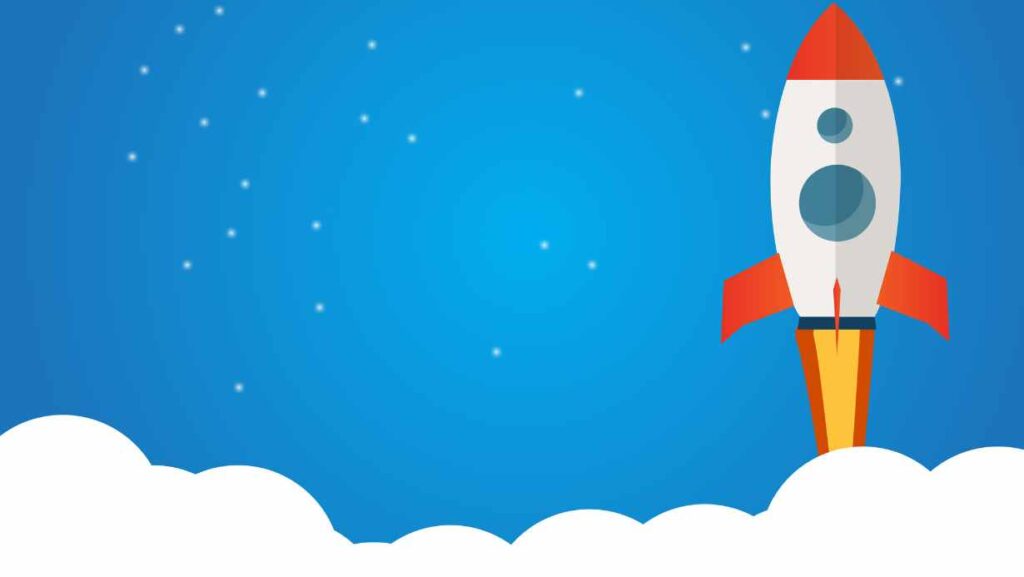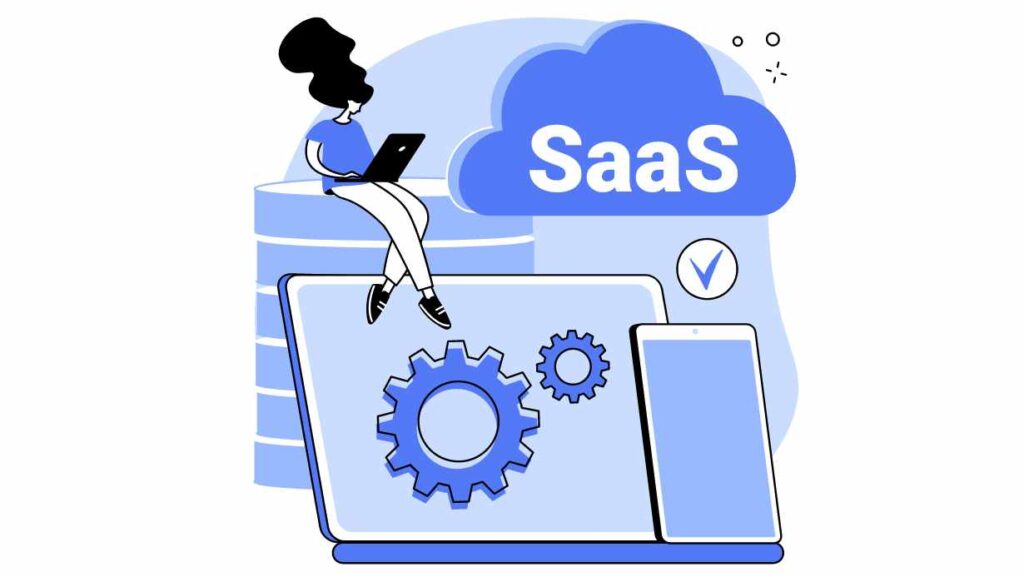SaaS Product Development: Introduction
SaaS (Software as a Service) has revolutionized the software industry, providing businesses and individuals with flexible, cost-effective, and accessible solutions for their software needs. As the demand for SaaS applications continues to soar, many entrepreneurs and organizations are looking to tap into this lucrative market by developing their own SaaS products. However, embarking on the journey of SaaS product development can be a complex and daunting task. It requires a well-defined strategy, a thorough understanding of the market and user needs, and a structured process to bring the product from ideation to launch.
In this blog post, we will guide you through the step-by-step process of SaaS product development, highlighting key considerations, challenges, and strategies for success. Whether you are a startup founder or an established organization looking to expand your product offerings, this guide will provide valuable insights to help you navigate the exciting world of SaaS product development.
What Is a SaaS Application?
Before diving into the process of developing a SaaS product, let’s start with a brief explanation of what a SaaS application is. SaaS stands for Software as a Service, which refers to a software distribution model where applications are hosted on a cloud infrastructure and made available to customers over the internet. In a SaaS model, users can access and use the software without the need for installation or maintenance on their local machines.
Developing a SaaS Product Development Strategy
To ensure a successful SaaS product launch, it is crucial to have a well-defined product development strategy in place. This strategy serves as a roadmap for the entire development process, guiding decisions and actions. A robust strategy typically includes:
- Market Analysis: Conduct thorough market research to identify trends, competition, and potential opportunities. Understand the needs and pain points of your target audience.
- Value Proposition: Define a clear value proposition that differentiates your SaaS product from competitors. Identify the unique features or benefits that will attract customers.
- Business Model: Determine the business model that best suits your product and target market. Consider factors such as pricing, revenue streams, and customer acquisition strategies.
- Technical Considerations: Assess the technical requirements of your SaaS product, including scalability, security, and integrations. Determine the technology stack and infrastructure needed to support your application.
- User Experience: Design an intuitive and user-friendly interface that aligns with the needs and preferences of your target audience. Focus on providing a seamless user experience throughout the application.
- Iterative Development: Embrace an iterative development approach, allowing for continuous improvement based on user feedback and market dynamics. Release regular updates and new features to enhance the product over time.
Steps to Designing a SaaS Product Roadmap
A SaaS product roadmap outlines the key milestones, features, and timelines for the development process. It helps align the development team, stakeholders, and investors on the product vision. Here are the essential steps to designing an effective SaaS product roadmap:
| Steps in SaaS Product Development Process | Description |
|---|---|
| 1. Idea Generation | Identify a problem or opportunity in the market and brainstorm ideas for a SaaS product that can address it. |
| 2. Market Research | Conduct market analysis to validate the demand for your product idea, assess competition, and understand user needs. |
| 3. Product Definition | Clearly define the product vision, goals, target audience, and core features that will differentiate your SaaS product. |
| 4. Design and Prototyping | Create wireframes and design mockups to visualize the user interface and user experience. Develop prototypes to validate the design concept. |
| 5. Development | Implement the SaaS product using agile development methodologies. Divide the development process into sprints and regularly test and iterate on the product. |
| 6. Testing and Quality Assurance | Conduct comprehensive testing to ensure the functionality, performance, and security of the SaaS application. Fix any bugs or issues identified during testing. |
| 7. Deployment and Infrastructure Setup | Deploy the SaaS application on the chosen cloud infrastructure and configure the necessary server and network components. |
| 8. User Onboarding and Documentation | Develop user onboarding materials, tutorials, and documentation to help users understand and make the most of your SaaS product. |
| 9. Marketing and Launch | Create a marketing strategy to generate awareness and attract users to your SaaS product. Plan a launch event or campaign to announce the availability of your product. |
| 10. Customer Support and Feedback | Establish channels for customer support and gather feedback from users. Use this feedback to continuously improve the product and address customer needs |
Building SaaS Application
Building a SaaS (Software as a Service) application involves a series of steps that encompass the development, deployment, and maintenance of the software. Here’s a high-level overview of the process:

1. Define Your SaaS Product
- Identify the problem or need your SaaS application will address.
- Determine the target market and user personas.
- Outline the key features and functionalities of your SaaS product.
2. Design the User Experience (UX) and User Interface (UI)
- Create wireframes and prototypes to visualize the flow and structure of your application.
- Design an intuitive and user-friendly interface that aligns with your target audience’s preferences.
- Consider usability, accessibility, and responsiveness across different devices.
3. Choose the Right Technology Stack
- Select the appropriate programming languages, frameworks, and libraries based on your product requirements.
- Consider factors like scalability, security, and compatibility with your desired features.
- Opt for cloud-based infrastructure and services for scalability and reliability.
4. Develop the Backend
- Implement the core functionalities and logic of your SaaS application.
- Handle data storage, user management, authentication, and business logic.
- Consider using APIs and microservices architecture for modular and scalable development.
5. Build the Frontend
- Develop the client-side components and user interfaces of your application.
- Implement responsive designs and ensure cross-browser compatibility.
- Leverage modern front-end frameworks and libraries for efficient development.
6. Ensuring Security in SaaS Product Development
- Incorporate robust security measures to protect user data and prevent unauthorized access.
- Utilize encryption, secure authentication mechanisms, and secure coding practices.
- Regularly conduct security audits and address any vulnerabilities.
7. Integrate Third-Party Services
- Integrate with external services or APIs that enhance your application’s functionality.
- Examples include payment gateways, email service providers, analytics platforms, and social media integrations.
- Ensure proper documentation and adherence to API guidelines.
8. Testing and Quality Assurance in SaaS Product Development
- Conduct thorough testing to identify and fix any bugs, errors, or usability issues.
- Perform functional testing, usability testing, compatibility testing, and performance testing.
- Establish a quality assurance process to ensure a stable and reliable SaaS application.
9. Deploy and Monitor
- Deploy your SaaS application to a production environment.
- Set up monitoring tools to track performance, usage metrics, and error logs.
- Continuously monitor and optimize your application for scalability and performance.
10. Provide Ongoing Maintenance and Support
- Regularly update your SaaS application to introduce new features and improvements.
- Address user feedback and bug reports promptly.
- Offer customer support channels for users to seek assistance and provide feedback.
Building a SaaS application is a complex and iterative process. It requires collaboration between designers, developers, and other stakeholders to create a reliable and user-centric software-as-a-service solution. By following these steps and continuously refining your product based on user feedback, you can develop a successful SaaS application.
Building Your SaaS Development Team: In-House vs. Outsourcing?
When it comes to building your SaaS development team, you have two primary options: in-house development or outsourcing to a software development company. Each approach has its own advantages and considerations:
| Aspect | In-House Development | Outsourcing |
|---|---|---|
| Team | Internal team hired and managed by the company | External team or vendor hired for development |
| Control | Full control over the development process and decisions | Shared control with the vendor or outsourcing partner |
| Expertise | Relies on internal expertise and knowledge | Access to specialized skills and expertise of the outsourcing partner |
| Cost | Higher initial investment in hiring, infrastructure, and ongoing operational expenses | Potential cost savings through reduced overhead and resource allocation |
| Time | Development timelines can be managed internally | Outsourcing can potentially result in faster development timelines |
| Communication | Direct and immediate communication within the internal team | Communication is managed with the outsourcing partner according to the agreed-upon processes |
| Scalability | Scaling up may require additional hiring and resources | Scalability can be facilitated through the outsourcing partner’s resources and flexibility |
| Flexibility | Internal team can adapt to changes and priorities | Outsourcing partner can provide flexibility based on project needs |
| Quality Control | Direct oversight and quality control by the internal team | Quality control measures are established in the outsourcing agreement |
| Risk Management | Internal team can closely monitor and mitigate risks | Shared responsibility for risk management with the outsourcing partner |
Ultimately, the decision between in-house development and outsourcing depends on factors such as budget, project complexity, timeline, and resource availability. Assess your specific needs and weigh the pros and cons to determine the most suitable approach for your SaaS product development.
The SaaS Product Development Process: From Idea to Launch

Now, let’s delve into the comprehensive SaaS product development process, encompassing the journey from idea generation to product launch. This process typically includes the following stages:
- Idea Generation: Identify a problem or opportunity in the market and generate ideas for a SaaS product that can address it.
- Market Research: Conduct in-depth analysis to validate the demand for your product idea, identify your target audience, understand their needs, and assess the competition.
- Product Definition: Clearly define your product vision, goals, and target audience. Identify the core features that will set your SaaS product apart from competitors.
- Design and Prototyping: Create wireframes and design mockups to visualize the user interface and experience. Develop prototypes to validate the design concept and gather user feedback.
- Development: Implement the SaaS product using agile methodologies, dividing the process into sprints for iterative development, testing, and continuous integration.
- Testing and Quality Assurance: Conduct comprehensive testing to ensure functionality, performance, and security. Address any bugs or issues identified during testing.
- Deployment and Infrastructure Setup: Deploy your SaaS application on your chosen cloud infrastructure, configuring servers and networks for scalability and reliability.
- User Onboarding and Documentation: Develop user onboarding materials, tutorials, and documentation to provide a seamless onboarding experience.
- Marketing and Launch: Create a SaaS marketing strategy to generate awareness and attract users. Plan a launch event or campaign to announce the availability of your product.
- Customer Support and Feedback: Establish channels for customer support and gather feedback to make necessary improvements and enhance the product.
By following this structured process, you can effectively navigate the journey of SaaS product development, from ideation to launch. Each stage plays a vital role in creating a successful and market-ready SaaS product. Stay focused, agile, and customer-centric throughout the process to ensure the development of a high-quality product that meets user needs.
SaaS Product Development Cost
Developing a SaaS product involves various costs that need to be considered during the planning and budgeting phase. The total development cost can vary depending on factors such as the complexity of the product, the size of the development team, the technology stack used, and the development timeline. Here are some key cost components to consider:
| Cost Components | Description |
|---|---|
| Personnel Costs | This includes the salaries or fees for the development team involved in building the SaaS product. |
| Infrastructure Costs | SaaS products require a robust and scalable infrastructure, including costs related to cloud hosting services and server provisioning. |
| Third-Party Services and APIs | Depending on the requirements of your SaaS product, integration with third-party services or APIs may incur additional costs. |
| Software Tools and Development Platforms | Development tools and platforms, such as IDEs and project management tools, may require licensing or subscription fees. |
| Testing and Quality Assurance | Costs associated with testing resources, test environments, and automation tools. |
| User Interface and Experience Design | Investing in UI and UX design is essential for creating an intuitive and visually appealing SaaS product. |
| Security and Compliance | Building a secure SaaS product involves implementing appropriate security measures and complying with industry standards. |
| Maintenance and Support | Ongoing maintenance, bug fixes, updates, user support, and infrastructure management. |
It’s important to note that estimating SaaS product development costs can be challenging due to project-specific factors. Engaging with a development team or experts can provide a more accurate assessment of requirements and costs.
Allocating a budget for contingencies and unforeseen expenses is advisable. Proper planning and cost monitoring throughout the project ensure alignment with financial goals.
Remember, investing in a high-quality SaaS product is a long-term strategy with the potential for revenue, customer satisfaction, and business growth.
Common Challenges in SaaS Product Development and How to Overcome Them

During the SaaS product development journey, you may encounter several common challenges. Here are some key challenges and strategies to overcome them:
- Feature Creep: The tendency to continuously add new features, resulting in scope creep and delays. To overcome this, establish a clear product roadmap, prioritize features based on user needs, and practice disciplined decision-making.
- Scalability: Ensuring your SaaS product can handle increased user demand and data volume. Plan for scalability from the start, leverage cloud-based infrastructure, and regularly monitor and optimize performance.
- User Adoption: Encouraging users to adopt and engage with your SaaS product. Provide a seamless onboarding experience, offer comprehensive user documentation and support, and continuously gather and act upon user feedback.
- Security: Addressing data security concerns to build trust with users. Implement robust security measures, adhere to industry best practices, and regularly assess and update security protocols.
- Competitive Differentiation: Standing out in a crowded market by offering unique value. Conduct thorough market research, identify gaps or pain points, and focus on delivering a compelling and differentiated product.
- Technical Debt: Accumulation of suboptimal code or architectural decisions that hinder development progress. Regularly address technical debt through refactoring and code reviews to maintain a scalable and maintainable codebase.
By anticipating and addressing these challenges proactively, you can mitigate risks and increase the chances of a successful SaaS product launch.
Leveraging Data in SaaS Product Development
Data plays a crucial role in the development and success of a SaaS product. By leveraging data effectively, you can gain valuable insights, make data-driven decisions, and enhance the user experience. Here are some key ways to utilize data in SaaS product development:
- User Analytics: Implement analytics tools to track user behavior, engagement, and usage patterns within your SaaS application. Analyze this data to understand how users interact with different features and identify areas for improvement.
- Feedback and Surveys: Collect feedback from users through surveys, feedback forms, or in-app messaging. Analyze this feedback to gain insights into user preferences, pain points, and suggestions for enhancement.
- A/B Testing: Conduct A/B tests to compare different variations of your SaaS product’s features, design, or user interface. Analyze user behavior and feedback to determine which variation performs better and drives higher user satisfaction.
- Performance Monitoring: Monitor the performance of your SaaS application in terms of response time, uptime, and resource utilization. Use performance metrics to identify bottlenecks, optimize system performance, and ensure a smooth user experience.
- Market Research and Competitive Analysis: Utilize market research data and competitive analysis to identify trends, market demands, and areas where your SaaS product can stand out. Stay informed about industry developments and adapt your product strategy accordingly.
- Predictive Analytics: Leverage predictive analytics algorithms to forecast user behavior, identify churn risks, and personalize user experiences. By understanding user preferences and needs in advance, you can proactively address their requirements and improve retention rates.
Remember, data privacy and security should always be a priority when leveraging user data. Ensure compliance with relevant regulations and adopt best practices to protect user information.
Conclusion
Developing a SaaS product requires careful planning, a well-defined strategy, and a customer-centric approach. By following a step-by-step process, you can navigate the complexities of SaaS product development and increase the chances of a successful launch.
From idea generation to product launch, each stage presents its own challenges and opportunities. By addressing common challenges, such as feature creep, scalability, and user adoption, you can overcome obstacles and deliver a high-quality SaaS application.
Leveraging data throughout development allows you to make informed decisions, enhance the user experience, and stay competitive in the market. By utilizing analytics, feedback, A/B testing, and market research, you can continuously improve your SaaS product and meet the evolving needs of your customers. For better results and accurate data, seek help from professionals. Visit market research China to learn more.
Keep in mind that SaaS product development is an ongoing process. Embrace continuous improvement, gather user feedback, and adapt to changing market dynamics. By staying agile and customer-focused, you can build a successful SaaS product that provides value to your users and drives business growth.
FAQs
How Long Does It Take To Develop a SaaS Product?
The development timeline for a SaaS product can vary depending on its complexity, features, and the resources allocated to the project. On average, it can take anywhere from a few months to a year or more to develop a fully functional and market-ready SaaS product.
Should I Build My SaaS Product In-House or Outsource Development?
The decision to build in-house or outsource SaaS product development depends on various factors, including your internal resources, expertise, budget, and time constraints. Both options have their pros and cons, so it's important to evaluate your specific needs and determine the best approach for your business.
How Do I Market and Launch My SaaS Product?
Developing a comprehensive marketing strategy is essential to generate awareness and attract users to your SaaS product. Utilize digital marketing channels, create engaging content, leverage social media, and consider partnerships or collaborations to increase visibility. Plan a well-coordinated launch event or campaign to announce the availability of your SaaS product.
What Are the Two Main Varieties of SaaS?
The two main varieties of SaaS are vertical SaaS, which caters to specific industries, and horizontal SaaS, which provides general-purpose solutions applicable across various sectors.
See Also: How to Enhance Your Performance Evaluation Process










